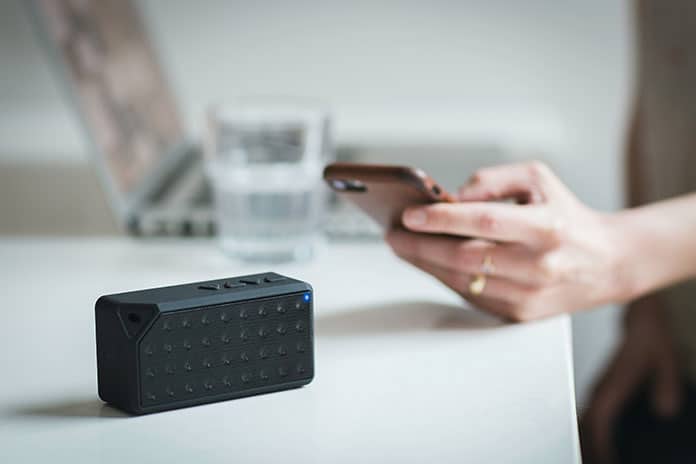The Wi-Fi 6 standard (802.11 ax) is intended to open the door to the multi-gigabit world, but is also suitable for high-density networks. A switch to Wi-Fi 6 should still be well thought out and needs the right planning. The following five questions should be asked before the rollout.
Do You Need Wi-Fi 6 Speed?
To develop their full speed potential, most Wi-Fi 6 access points (APs) are delivered with a 2.5 or 5 Gbit / s LAN connection. On the other hand, Wi-Fi 5 APs (802.11ac) have a 1 Gbit / s interface. Connecting a Wi-Fi 6 access point to a traditional gigabit network is possible – however, the speed is then throttled to 1 Gbit /s.
On the other hand, you may not even need Wi-Fi access points that support higher speeds – for example, if your office only has a few laptops and smartphones with standard applications. In networks with many users or high throughput (e.g. streaming in 4K), Wi-Fi 6 makes sense. Especially when the data does not come from the Internet, but via LAN.
Is Your Network Ready for Wi-Fi 6?
Evaluate your existing network: Which (wired) upgrades are necessary to open the door to the multi-gigabit world? You should pay particular attention to the following points:
- Switches: Check what maximum data rate the switches between the access points and the router support. If the Wi-Fi clients access the network via LAN, follow the traffic and check the buttons on the data’s path.
- PoE: If you use Power-over-Ethernet to operate the access points, you should also check which PoE standards and data rates are supported. Remember that Wi-Fi 6 access points should at least comply with the PoE + standard (802.3at). A few APs are also satisfied with the legacy standard (802.3af), but this usually results in limited access point performance and limits the data rate to a maximum of 1 Gbit / s. To be future-proof, you should consider using the newer PoE ++ standard (802.3bt) if you have the opportunity.
- Cabling: To realize data rates beyond the 1 Gbit / s limit, you need Cat6 cabling between the access points and the router. To be ready for the future, you can also consider Cat6a, 7, 7a or 8. If you are still using Cat5e or older: Remember that you do not have to rewire every Ethernet instance – depending on what the Wi-Fi clients access via LAN and which route the traffic is taking.
- Router: In the case of a smaller network in which the router’s switch ports are used, an upgrade is recommended if they only support 1 Gbit /s.
When it comes to multi-gigabit support for switches, PoE and routers, the options are usually 2.5 Gbit / s, 5 Gbit / s and 10 Gbit / s. For Wi-Fi 6, 2.5 or 5 Gbit / s are sufficient. Nevertheless, in the interests of future security, you should consider the 10 Gbit / s option.
Where do The Wi-Fi 6 Access Points go?
Before any Wi-Fi deployment, you should take a close look at the location. A Wi-Fi site survey can help you determine the best place for the access points. This is the only way to achieve the best possible coverage and performance. The range and coverage of Wi-Fi 6 is similar to that of older standards, but there are differences in terms of density that can affect the placement of the APs and the configuration.
If you have little or no wireless networking experience, you should find someone knowledgeable about this area. Setting up access points at random can prove to be an expensive mistake, especially in more extensive networks. Fortunately, there are tools available to help build a Wi-Fi network, such as heat mapping software. Either way, taking a professional approach can save you time, money and headaches.
Where Can I Find Wi-Fi 6 Clients?
Although Wi-Fi 6 access points are backwards-compatible (802.11a / b / g / n / ac), they do not bring any benefits without clients that support the new standard. There are currently not too many – the newer smartphones ( iPhone 11 and 12, for example) and notebooks keep Wi-Fi 6.
If you use a particular network or selected devices that require exceptionally high throughput, you may not be able to wait for appropriate software updates. Corresponding PCIe adapters are available for desktop PCs, M.2 / NGFF Wi-Fi 6 adapters are available for laptops. The ” Product Finder ” of the Wi-Fi Alliance gives you an overview of compatible devices.
Are There the Wi-Fi 6 Features you Want?
As with 802.11 ac, the 802.11ax standard is also being rolled out in phases. It starts with devices that can send and receive up to four spatial streams simultaneously; later, the number will increase to eight. The new feature OFDMA (Orthogonal Frequency Division Multiplexing) is available in both directions from the start. Different clients with different bandwidth requirements can connect to the same access point at the same time.


